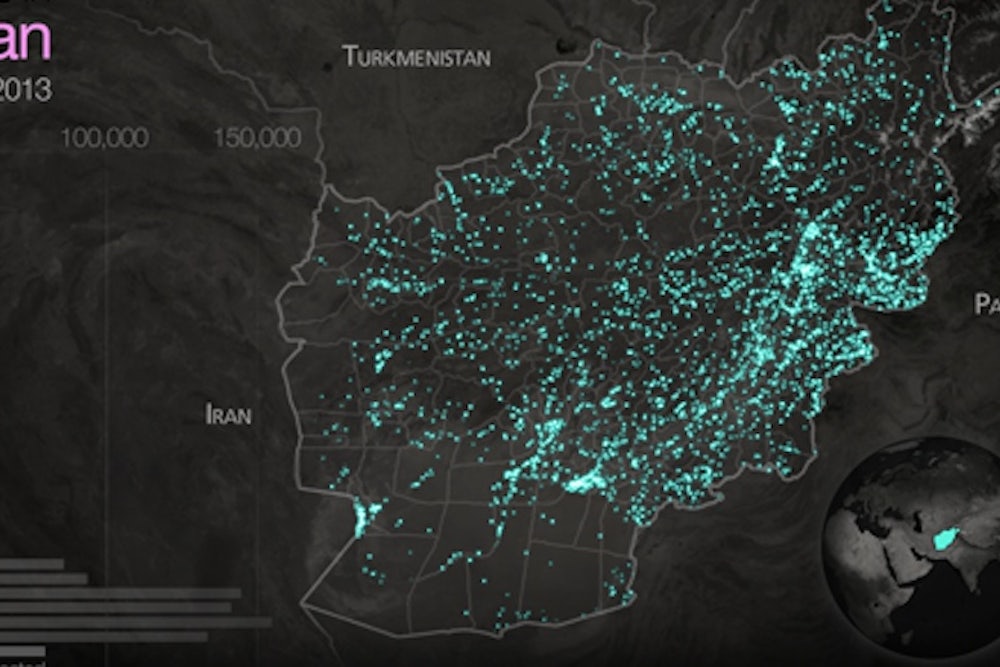Although Secretary of State John Kerry said Wednesday that Washington and Kabul had finalized the language for the bilateral security agreement that would permit a continued American troop presence through 2024—and keep billions of dollars of international aid flowing to Kabul—Afghanistan President Hamid Karzai dealt the U.S. a curveball the next day when he told thousands of Afghan leaders gathered for a loya jirga that he wouldn’t sign anything until after the presidential election in April.
The surprise announcement cast doubt over whether a deal could be reached—Defense Secretary Chuck Hagel advised against committing to anything without one—which could mean the U.S. will be forced to pull out all troops by 2014. And yet, few European and coalition forces would remain, leaving the Afghan National Security Forces to fight the Taliban on their own. That could mean a significant deterioration of security, with the Taliban and local militias facing less of a fight in taking territory and exacting concessions from the government.
With so much hinging on the ability of Washington and Kabul to come to an agreement in the next few weeks, new data that predicts possible future conflicts in the country provides a little clarity on Afghanistan's future. Using the Global Data on Events, Location, and Tone—the massive database of over two million political events that have occurred since 1979—Joshua Stevens, Jay Yonamine, and John Beieler developed a statistical model and visualization that maps every material conflict that has occurred in Afghanistan, and used it to predict future unrest. “When mapped in this way, the precision of GDELT reveals spatial patterns in the data that can help analysts determine the context of each event. For example, conflicts near borders become especially salient, exposing the significance of geopolitics in the region,” Stevens said in an email.
According to the map, over one million material, or physical, conflicts have occurred in Afghanistan since 1979, with 92 percent occurring after October 7, 2001—the beginning of Operation Enduring Freedom. And while most districts are expected to see increased conflict over the next year, a few areas do show signs of improvement.
